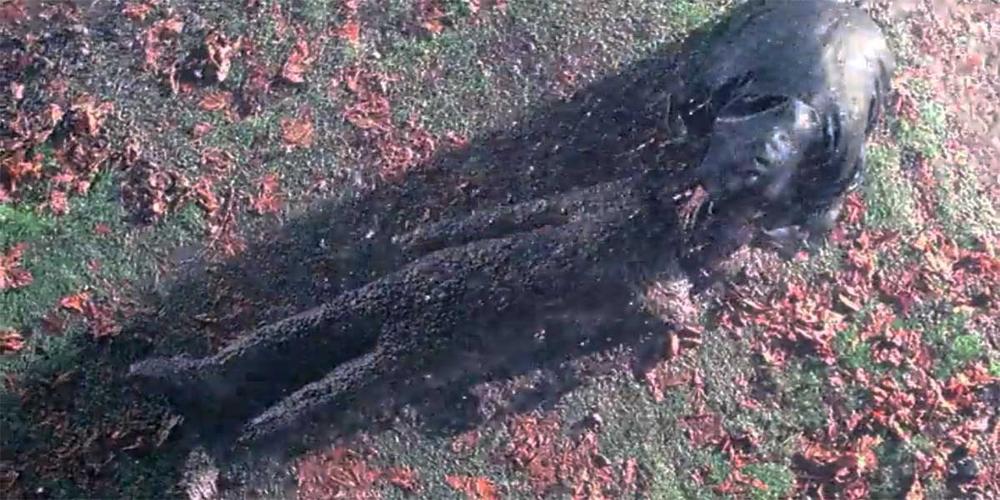![Matzah, via Wikimedia, By Yoninah (Own work) [GFDL (http://www.gnu.org/copyleft/fdl.html), CC-BY-SA-3.0 (http://creativecommons.org/licenses/by-sa/3.0/) or CC BY 2.5 (http://creativecommons.org/licenses/by/2.5)], via Wikimedia Commons](https://149455152.v2.pressablecdn.com/wp-content/uploads/2016/04/Shmura_Matzo.jpg)
Blood libels would culminate in pogroms, many instigated by local religious leaders to build fervor. Jewish men, women, and children would be beaten, killed, homes set on fire, in a Middle Ages version of team-building. Jews were at a disadvantage by numbers, access to weapons, and even at the whim of local leaders for protection. It’s no great surprise that in this era a legend was born to protect his people: the Golem.
![Pogrom de Strasbourg, 1349; Émile Schweitzer [Public domain or Licence Ouverte], via Wikimedia Commons](https://149455152.v2.pressablecdn.com/wp-content/uploads/2016/04/Pogrom-de-Strasbourg-1349.jpg)
The Golem has popped up in a multitude of places in pop culture, from TV to books to games. Some of the treatments have been more respectful while some show a basic familiarity with the legend but distinct disinterest in getting the facts about Jewish life right. Season 4 of X-Files, I’m looking at you. Episode 15 of the fourth season, “Kaddish,” opens with a man reciting kaddish. This entire scene is completely off (if you want details let me know in the comments), but the truly egregious part of the episode is the very premise, the creation of the Golem. It’s the X-Files, so we’re going to run with “Sure, random Jews totally know how to make a Golem.”
![Golem, via Wikimedia: By Philippe Semeria (www.philippe-semeria.com) [CC BY 3.0 (http://creativecommons.org/licenses/by/3.0)], via Wikimedia Commons](https://149455152.v2.pressablecdn.com/wp-content/uploads/2016/04/Golem_by_Philippe_Semeria-357x600.jpg)
The dead man is named Isaac Luria, a name that caught my attention, as he was a 16th-century rabbi from Jerusalem called the Ari, considered by many to be the father of Kabbalah. The Golem in Jewish mythology served one of two purposes: working as a servant or protecting the community. The most famous Golem story is that of the Golem of Prague, said to have been created by Rabbi Judah Loew, known as the MaHaRal. The Golem was tasked with protecting the community from pogroms, and was not a threat unless there was an active threat against the Jewish community. The Golem in X-Files was created of heartbreak and is set on vengeance, the very opposite of his role in the original legends. It’s important to note that in Judaism creating a Golem entailed literal creation of a living thing out of dust.

According to the legends there are a few different ways of bringing the Golem to life. The X-Files used one of the more well-known origins. The word on the Golem’s hand is ???, Emet, which means “truth.” In this version of Golem creation the aleph can be erased, rendering the word ??, Met, meaning “dead.” The book Mulder finds in the grave is called Sefer Yetzira, a Kabbalistic text. It’s a nice little nod to those in the know and makes up for some of the liberties they take.

While some Golems in pop culture, like those in Minecraft, are used to protect, the personal nature of the relationship between Golem and its creator has been lost. Golem gave hope to those who were among the most vulnerable. Legend has it that the Golem’s body is still at rest in the MaHaRal’s old home, waiting for the right person and time to raise him again.
How much do you know about Passover? Tell us in the comments if you know about the connections between Passover and Maxwell House coffee, paper plates, or Six Flags/Great Adventure!


As a kid, I had the audio cassette of The Mysterious Golem, starring Leonard Nimoy. Good times.